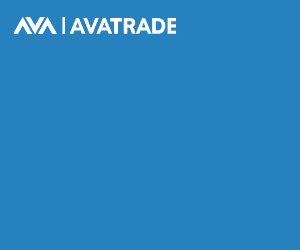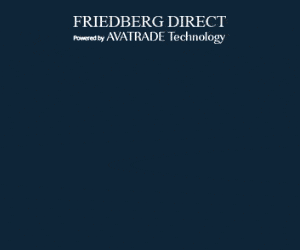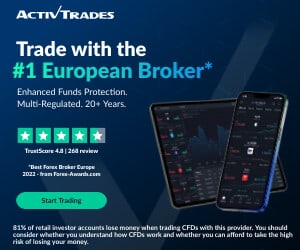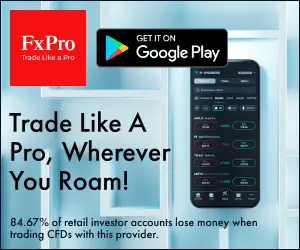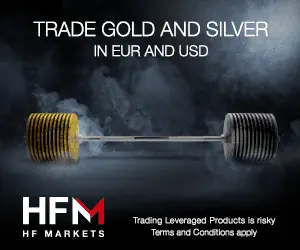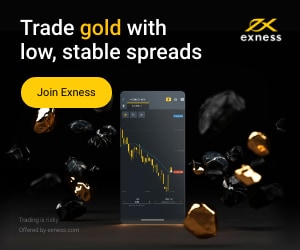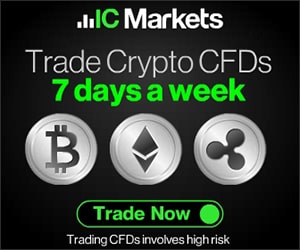Table of Contents
Nowadays, trading Forex is becoming increasingly popular, and the reason behind it is that the Forex gives you higher leverage compared to the stock investment. You might hear of the term leverage,’ but you probably might not know the definition, working mechanism, and how it affects your bottom line. You may wonder what leverage means and how it affects your trading.
This article will talk about trading mini futures, but we can apply all these rules and examples on Forex.

Well, leverage refers to the activity in which you borrow a specific amount of money required to invest in something. Usually, this money is borrowed from a broker in the Forex.
E-mini Futures Leverage
In E-mini trading, leverage allows traders to control a large contract with a relatively small amount of capital, evidenced by the low day trading margins, sometimes just $500. However, while each tick movement in the E-mini S&P 500 represents $12.50, to manage risk effectively and adhere to the 1% rule, traders should maintain an account balance of at least $5,000.
- Definition of Leverage:
- Leverage in Forex trading refers to using borrowed funds, typically from a broker, to amplify potential profits.
- The equation for margin-based leverage is MBL (Margin-Based Leverage) = Total transaction value / Required margin.
- Introduction to E-mini Futures (T7 E-mini):
- An E-mini is an electronically traded futures contract representing a fraction of the value of a standard futures contract.
- Predominantly traded on the Chicago Mercantile Exchange (CME).
- It covers stock indices like S&P 500, NASDAQ, Russell,, as well as commodities like silver, gold, and currencies.
- Key Features of E-mini:
- The first E-mini contract was introduced on September 9, 1997, based on the S&P 500.
- They are standardized contracts detailing the quality and specifics of an asset.
- E-mini contracts can either be physically delivered or settled in cash.
- Leverage in E-mini Trading:
- E-mini futures with many brokers can trade shallow day trading margins as low as $500.
- A tick movement in the E-mini S&P 500 translates to $12.50.
- Adhering to the 1% rule, an account balance should ideally be at least $5,000 to trade Emini futures responsibly.
- Benefits of E-mini Futures:
- She was initially designed as a more accessible option for smaller traders due to its reduced value compared to full-sized contracts.
- Offers round-the-clock trading opportunities, attractive margin rates, and notable liquidity.
- Understanding Leverage’s Role:
- Proper use of leverage is critical to trading success. Misuse can lead to significant losses.
- Common mistakes include over-leveraging and misunderstanding the margin as a safe trading limit.
- Account Leverage Ratio (ALR) is vital to grasp the total value of all contracts / Net liquidity in your account.
- Realistic trading ranges (RTR) should also be understood to reflect potential market volatility.
- Strategies to Safeguard Against Over-leverage:
- Comprehend your account’s real leverage.
- Engage in pair trading to decrease systematic risks.
- Hedge systematic risks, for instance, by considering short-term investments in faster-growing small caps.
- Choose a knowledgeable and responsive broker.
Now, I will present you one example:
E-mini Futures Leverage Trading Example
Let’s assume a trader named Alex has an account balance of $5,000 and wants to trade the E-mini S&P 500 futures. The current price of the E-mini S&P 500 is 4,000 points.
- Initial Margin Requirement: Alex’s broker has a day trading margin requirement of $500 for the E-mini S&P 500.
- Position Opening: With his $5,000 account, Alex can technically open up to 10 contracts ($5,000 divided by $500 margin per contract). However, to manage risk, Alex decides to buy just two contracts. This means he’s controlling a position equivalent to $400,000 in the S&P 500 index (2 contracts x 4,000 points x $50 per point).
- Price Movement: After Alex opens his position, the E-mini S&P 500 moves up by 10 points to 4,010.
- Profit Calculation: Each point in the E-mini S&P 500 is worth $50, and with a 10-point move, Alex’s profit would be $500 per contract. Since he has two contracts, his total profit would be $1,000 (10 points x $50 x 2 contracts).
- Leverage Effect: With a price movement of just 10 points (0.25% increase from 4,000 to 4,010), Alex made a 20% return on his $5,000 account. This demonstrates the power and risk of leverage in futures trading.
- Risk Management: However, if the market had moved against Alex by 10 points, he would have lost $1,000. Traders must understand leverage and employ adequate risk management strategies, such as stop-loss orders or hedging.
T7 E-mini Facts
- Definition: E-mini, or T7 E-mini, is an electronically traded futures contract.
- Value Comparison: It represents just a fraction of the value of a standard futures contract.
- Trading Platform: Predominantly traded on the Chicago Mercantile Exchange (CME).
- Coverage: E-mini contracts cover a wide range of stock and share indices, including major ones like the S&P 500, NASDAQ, and Russell.
- Versatility: In addition to stock indices, E-mini contracts encompass commodities such as silver and gold, as well as various currencies, including USD and Euro.
- Purpose: E-minis were introduced to offer a more accessible option for smaller traders than complete futures contracts.
Though we have encountered the standard futures contract, many of us may not be aware of Emini. Also known as T7 E-mini, it is an electronically traded contract. The unique thing about this is that it is just a fraction of the value when compared to a futures contract. While it is possible that such trading might be there in other places, it is perhaps more predominantly present on the CME or Chicago Mercantile Exchange. It covers a wide range of stock and share indices, including the big ones such as the S&P 500, NASDAQ, and Russell. Apart from stocks and shares, it also covers commodities such as silver and gold and various currencies, including USD and Euro.
As mentioned above, Emini futures contracts are traded primarily on the CME or Chicago Mercantile Exchange. It covers many things, such as commodities, currencies, and indexes. It has evolved over some time. The first E-mini contract was perhaps signed on Sept 9, 1997. It was based on the S&P 500. When discussing this contract, these are obligated financial deals where the buyer must buy an asset, and the seller must honor his part of the contract. The quality and detail of the asset in question are mentioned clearly. They are also standardized, so selling and buying in a futures exchange becomes easy. It also allows for physical delivery of the asset, and cash settlement is also permitted.
What is the best Emini leverage, capital, and risk?
E-mini futures have the lowest day trading margins, around $500, with the most brokers. The trader only needs $500 in the account to buy/sell one E-mini S&P 500 contract.
Each tick movement in the E-Mini S&P 500 is worth $12.50.
Based on the 1% rule, which states that a good trader can risk at most 1% per time, the minimum account balance to trade Emini futures should be at least $5,000!
Benefits of E-Mini
- Accessibility: E-mini contracts are more affordable, making them accessible to small traders due to their reduced size compared to full-sized contracts.
- Liquidity: E-Minis offer high liquidity, ensuring ease of entering and exiting positions.
- Round-the-Clock Trading: Allows for trading almost 24 hours a day, offering flexibility to traders across different time zones.
- Low Margin Rates: E-Mini futures generally have lower day trading margins than futures contracts.
- Volatility: Traders can potentially benefit from the regular price fluctuations of E-Minis, offering profit opportunities.
- Diversity: E-Minis covers many assets, including commodities, currencies, and major stock indices.
- Standardization: E-Mini contracts are standardized, making it easier for them to trade on future exchanges.
- Cash Settlement: Allows for settling in cash, offering convenience to traders who don’t wish to take physical delivery of assets.
- Popularity: Over the years, the number and variety of E-Mini contracts have grown significantly, proving their appeal in the trading community.
If something new in the stocks and commodities market is being tried out, some associated benefits are a part of such a move. When it was first started, there were skeptics who, as usual, were not too happy about it. However, with time, it started becoming quite popular. This is because the value of all full-sized S&P 500 contracts started to become too big and unwieldy for small traders.
Since the value was just one-fifth of the full-sized contract, it became popular among small traders. It was only a matter of time before it started becoming popular and reached new avenues of success. It has grown in number and size over the past three decades, and today, there are scores of e-mini contracts. They cover several commodities, currencies, and indexes. While e-mini is open to other stock exchanges and bourses, the S&P 500 continues to be where it is used prominently and regularly.
Conclusion
Evan, if you trade forex or Emini futures like S&P mini futures, your capital must be calculated to risk 1% per trade. For Emini traders – $5000 is the minimum capital when you want to use emini leverage correctly! If you are in the margin, you’re at serious risk of ending up in your account. If you are continuously on the margin call, trading is not for you, and you should stop it.


